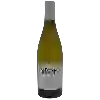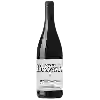
Domaine de RombeauLe Po L'Élevé Côtes du Roussillon Villages
This wine generally goes well with beef, veal or pasta.
Food and wine pairings with Le Po L'Élevé Côtes du Roussillon Villages
Pairings that work perfectly with Le Po L'Élevé Côtes du Roussillon Villages
Original food and wine pairings with Le Po L'Élevé Côtes du Roussillon Villages
The Le Po L'Élevé Côtes du Roussillon Villages of Domaine de Rombeau matches generally quite well with dishes such as recipes .
Details and technical informations about Domaine de Rombeau's Le Po L'Élevé Côtes du Roussillon Villages.
Discover the grape variety: Esther
Interspecific crossing between the white Villard (Seyve-Villard 12375) and the magarcsi csemege obtained in 1969 in Hungary by Sandor Szegedi. This hybrid, most often used as a table grape, has been little multiplied and is still of great interest to amateur gardeners. It can be found in Hungary, Germany, Austria, Switzerland, Slovenia, ... completely unknown in France.
Informations about the Domaine de Rombeau
The Domaine de Rombeau is one of of the world's great estates. It offers 30 wines for sale in the of Côtes du Roussillon Villages to come and discover on site or to buy online.
The wine region of Côtes du Roussillon Villages
The wine region of Côtes du Roussillon Villages is located in the region of Côtes du Roussillon of Languedoc-Roussillon of France. Wineries and vineyards like the Domaine du Clos des Fées or the Domaine de Rombeau produce mainly wines red, white and pink. The most planted grape varieties in the region of Côtes du Roussillon Villages are Mourvèdre, Lledoner pelut and Pinot noir, they are then used in wines in blends or as a single variety. On the nose of Côtes du Roussillon Villages often reveals types of flavors of cherry, anise or black plum and sometimes also flavors of citrus fruit, tree fruit or fennel.
The wine region of Languedoc-Roussillon
Languedoc (formerly Coteaux du Languedoc) is a key appellation used in the Languedoc-Roussillon wine region of southern France. It covers Dry table wines of all three colors (red, white and rosé) from the entire region, but leaves Sweet and Sparkling wines to other more specialized appellations. About 75% of all Languedoc wines are red, with the remaining 25% split roughly down the middle between whites and rosés. The appellation covers most of the Languedoc region and almost a third of all the vineyards in France.
The word of the wine: Burgundy melon
A white grape variety from Burgundy that is not widely used in its native region, but has spread to the Nantes region. It is the exclusive variety of Muscadet. It gives a dry pale yellow wine, supple and lively, with an intense bouquet, to which maturing on lees gives fatness and aromatic complexity.














